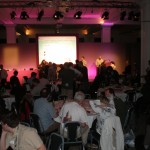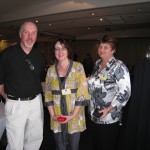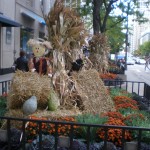2009 was a huge year of personal learning outside of my classroom and I’d like to recognise that the opportunities that arose over the past 12 months were a direct result of the work I had been doing in my classroom in 2006, 2007 and 2008 (so thanks to all of those talented and amazing students who taught me so well and allowed me to work along-side them).
2009 presented the chance to share what I had been up to with others far removed from my little classroom in a suburb of Sydney. So here’s how it went:
January – saw me travelling throughout the UK on my Premier’s English Scholarship, making and meeting friends and seeing first hand Games Based Learning in classrooms. I was very excited to attend my first Teachmeet (on my birthday) at BETT09, and amazed to catch up f2f with many of my PLN.
February – March: I had the opportunity to present at a number of conferences and Professional Learning workshops at a local, region and state level, sharing how I used web2.0 technologies in my classroom.
April – May: Back with the DET I was involved with the Blog trial and took part in f2f meetings with like-minded educators from around the state to assist in the department developing a blog platform for all DET students and teachers. Began writing a Narrative Unit for the Curriculum Directorate based on a digital game for use with Stage 2 students.
June – July: Travelled to Washington, USA for NECC09 where I took part in many fantastic workshops, tutorials, discussions and events. Met up with some in my US PLN and joined in my first “Web2.0 Smackdown”! Moved on to Barcelona where I nervously presented at my first international conference, and then learnt a great deal at an imagination conference in Vancouver. Whew! A really busy month or so :-}
August – September: Back at school and trialling a wiiMusic project with my class – fun, interesting and many more possibilities to be explored here! Presented again at Sydney University for eLit (Primary English Teachers Association).
October: Headed back to the US to present at a Visual Literacy Conference in Chicago where I showcased the visual literacy aspects and opportunities of web2.0 tools and applications. Had the chance to visit Yellowstone Park whilst travelling – unbelievable :-0
November: Visited Canberra and Parliament House to receive my National Teaching Award for Excellence by a Teacher. An exciting and really proud moment of my career and year!
December: Found out that my joint proposal for a workshop at ISTE 2010 (in Denver Colorado in June 2010) was accepted so can look forward to further travels mid year 2010 already.
So that’s it – a busy year out of my classroom where I have grown as a learner, presenter and person. I’ve been able to see a bigger picture and refine my thinking in many areas, but have been affirmed in many of my deep beliefs about learning, children, and authenticity.
Thanks to the countless people who have shared so much of themselves with me this year – f2f, on twitter, through blogs and conferences. I love learning with such a diverse and supportive group of dedicated professionals.
With 2010 upon us lets take a breath, think peaceful thoughts and then get on with another great year of learning and sharing. We WILL make a difference!





